Water is leaking from below the Samsung washing machine
 You must always be prepared for the fact that your favorite washing machine may break down: no household appliance can work forever. But if a chaotically flashing display or a locked door only warns of a problem, then a puddle under the washing machine is urgent and serious. You cannot place a rag and continue the cycle: it is necessary to quickly diagnose the source of the leak and fix the problem.
You must always be prepared for the fact that your favorite washing machine may break down: no household appliance can work forever. But if a chaotically flashing display or a locked door only warns of a problem, then a puddle under the washing machine is urgent and serious. You cannot place a rag and continue the cycle: it is necessary to quickly diagnose the source of the leak and fix the problem.
Despite the frightening water under your feet, you can repair your Samsung machine on your own. It is enough to partially disassemble the unit and carefully examine several “sore points”. The following overview of all possible problems due to which the washing machine is leaking from below will help with this.
Why does this happen?
Not a single washing machine is immune from sudden leaks, and models even from such a proven and reliable brand as Samsung are no exception. Each machine has its own shortcomings and weaknesses, which eventually lead to an accident. Especially if the unit is used frequently, for a long time and carelessly. If we look more specifically, the cause of the puddle that appears may be:
- improper operation of the washing machine;
- using detergents that are not suitable for the machine;
- mechanical damage to machine elements;
- installation of low quality parts;
- manufacturing defects.
Important! If the problem is low-quality parts and a manufacturing defect, then a leak appears almost immediately after repairing or assembling the washing machine.
The item with mechanical damage to individual parts can be supplemented with a number of elements of the washing machine that are vulnerable to wear.We are talking about a drum, pump, drain system hoses, cuff, filler and drain pipes, tank seal and powder dispenser. It is here that most often the integrity and tightness are violated, which leads to water flowing from the bottom left, front or back. Therefore, it is necessary to check each mentioned component of the device.
Required Initial Actions
Water with any electrical appliance is dangerous to life and health, so if you notice a wet spot next to the washing machine, be careful. Approach extremely carefully and do not touch the puddle under any circumstances, otherwise there is a high risk of getting an electric shock. First of all, disconnect the machine from the electrical network as soon as possible, even if the cycle is not completed.
Important! If the outlet is too close to a working machine, it is better to cut off the power supply to the entire room or apartment through the panel.
The next procedure is as follows:
- Shut off the water supply to the machine (turn the tap on the pipe).
- Drain the remaining water in the washer through the drain filter.
- We wipe up the puddles around.
- We move the machine away from the wall or pull it out of the box (if the machine is built-in).
- We examine it carefully.

To fully inspect the washing machine, you will have to remove the back or side wall, and in some cases, tilt it towards you and place a platform under the bottom. It is important to try to remember at what stage of the wash the leakage began, then you can significantly narrow the search field. It is recommended to pay attention to the nature of the water: dirty indicates a leak in the middle of the cycle, and clean indicates a leak at the beginning or end. Next, we carefully study each possible “culprit.”
Checking the fill hose
The first in line to check is the inlet hose, which most often becomes the source of a mini-flood. There are many reasons for such an outcome: mechanical damage to the rubber, pinching, abrasion, premature wear and poor fixation at the joints. A visual inspection will help determine the exact cause.
Important! You can check the water fill hose without plugging in the machine.
- Remove the back and top covers from the unit.
- We tilt the machine forward and place something solid under the bottom.
- We inspect the hose for cracks, abrasions, and gaps at the joints.
- If there is no visible damage, wipe the entire surface dry.
- We turn on the water and try to notice drops or splashes.

Dryness will clearly show that the rubber is intact and does not need to be replaced. Otherwise, the leak site will “give” itself away. It is worth considering that the hose for filling water is under pressure, so it is not enough to seal the crack or wrap it with sealant - a complete replacement of the element is necessary. If the leak occurs due to leaky connections at the joints, then the problem can be eliminated by changing the gasket and tightening it thoroughly.
If there is waste water on the floor
When the water under the machine is not clean, but dirty, it is worth admitting that the inlet hose is not to blame. Darkish liquid indicates a leak in the lower parts of the machine: the tank, pipes, pump or drain system. Let's start checking with the drain: all you need to do is start the drain or rinse mode on the washing machine and take a closer look. If the situation repeats, we seal the cracks in the hose with a rubber patch or replace it with a new one.
It is easy to purchase a fully functional hose, since the vast majority of elements of the Samsung drain system have standard dimensions and are available in all plumbing stores. We pay special attention to the connection points with the pump, volute and siphon. It is likely that the fixation has weakened. The solution will be to replace the gaskets, strengthen the fastenings with an additional clamp and use waterproof sealants.
Let's check the dispenser pipe
Clear water may indicate a problem with the dispenser connection. It’s easy to check the assumption: open the detergent tray and evaluate the quality of their rinsing. Powder that is not completely washed out indicates a leaking pipe through which water enters the dispensary from the inlet valve. Now we fix the problem, for which we need to:
- turn off the power to the washing machine;
- provide free access to the machine;
- remove the top cover;
- find fittings suitable for the powder receiver;
- replace hoses if they are wet or have external damage;
- tighten loose clamps;
- assemble the machine.
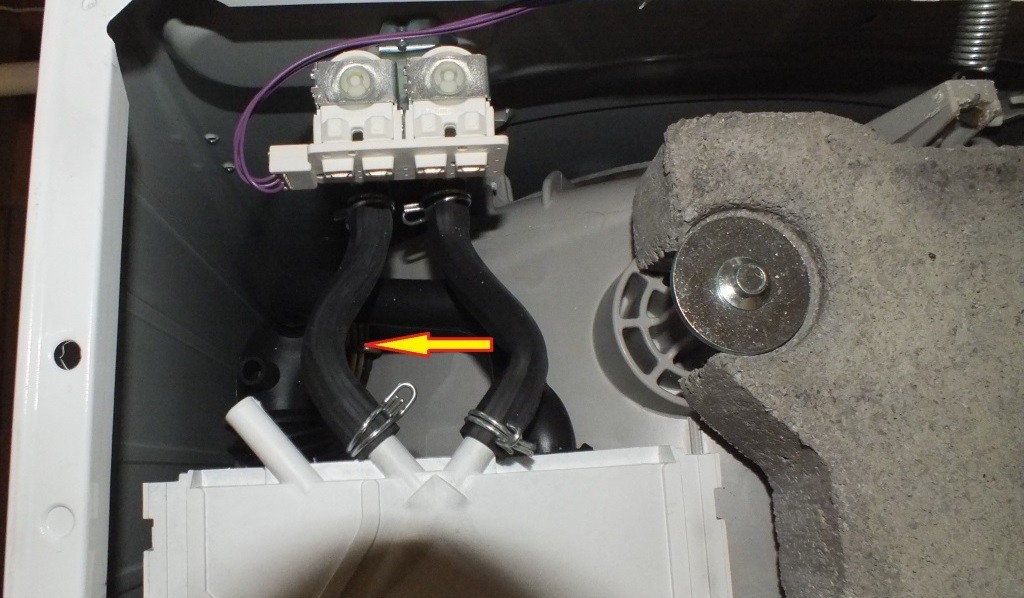
Such a breakdown makes itself felt from the very start of the cycle, when water begins to flow into the powder tray. The difficulty is that low pressure and small volumes make the leak almost invisible. Therefore, it is important to periodically inspect the machine during washing.
Could it be the drain pipe?
Rarely, the drain pipe located below the drum may leak. Its peculiarity is that it always contains liquid, so the puddle does not stop filling even after the washing machine stops and the water supply stops. If you notice that the leak does not stop, then this is definitely the problem.
To eliminate the problem, it is not necessary to contact the service department.Almost every owner of a Samsung washing machine can make a replacement. It is enough to drain the water through the garbage filter, turn the body on its side and carefully examine all the supply channels. Replacement parts are purchased at a regular store, and loose clamps are tightened by hand.
Let's take a look at the pump at the same time.
Here we also check the drain pump. To do this, disconnect the pump from the volute and pipe, clean it of debris and replace it with a new one. Do not neglect the accumulated dirt - it is often the source of damage to the part.
When the pump does not cause suspicion and looks intact, clean and functioning, we turn our attention to the snail. There should be no cracks or water on its surface. If there are any, most likely, due to a manufacturing defect, the coil burst and began to leak drops. Only replacing it with an undamaged part will help here.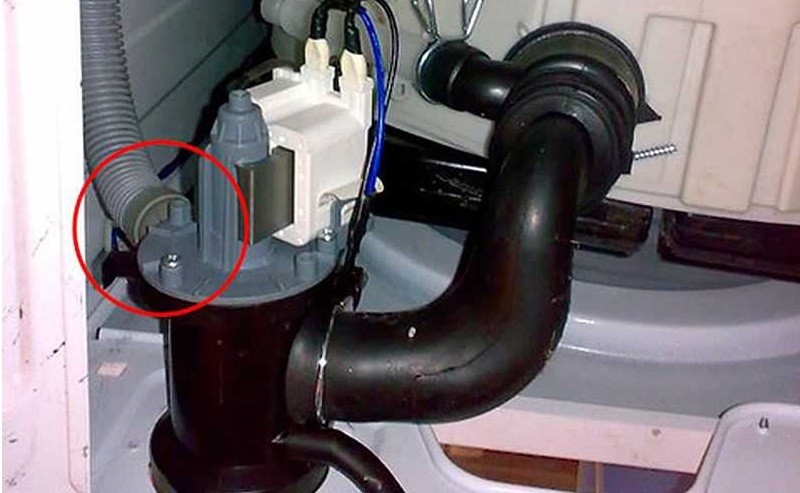
It's worse if the tank wall is damaged
If the puddle is large and the water is soapy, then there is a high probability that the drum has failed you. More precisely, cracks formed on its walls and a leak began. This is easy to explain: the tank often suffers from foreign objects, overload during spinning and a faulty heating element.
This assumption will be confirmed by a visual inspection of the inside surface of the washing machine, where it is important to check whether there are droplets on the underside of the bottom. You will need excellent vision and a flashlight. A front-loading washing machine is installed at an angle of 20-30 degrees, and the side wall is removed from the vertical one, after which we try to see the accumulated water.
You can repair it yourself, but special moisture-resistant glue will only seal the crack for a while.Installing a new tank will solve the problem, for which it is better to call a specialist from the service department. For a drum consisting of two halves, it is also possible to replace the gasket, which will also be done more reliably and with better quality by a technician.
Let's check the powder receptacle and cuff
The next on the list of possible sources of leakage are the powder receptacle and the cuff. Moreover, the problem often lies not in their wear and tear, but in the carelessness and negligence of the owners. Thus, the powder tray can easily become clogged with incorrectly selected powder or a foreign object entering the dispenser. In these cases, it is necessary to thoroughly clean the bunker from any congestion. Lack of control over the pressure of the supplied water and the functioning of the inlet channel is also common. If you reduce the pressure, the stream will have time to merge and not leak out.
The entry of foreign solid objects into the drum and rough unloading/loading of laundry can result in a damaged cuff.
Any damage to the rubber seal in the doorway of the washing machine breaks the tightness of the tank, which leads to leaks. Water flows only from the front wall of the case, however, the illusion of leakage from below is created. It is strictly prohibited to glue or patch a damaged seal - a full replacement is necessary.
We will protect the machine from leaks
Many problems when using Samsung washing machines can be avoided, especially when it comes to leaks. The water will remain in its proper place inside the tank if the owner of the washing machine follows the prescribed operating rules and treats the unit with care. Remember that machines have increased wear resistance, and most breakdowns occur due to external negligence and carelessness.Most of these problems can be prevented by regularly following a few simple recommendations.
- Use special bags for washing items containing metal objects and small parts.
- During washing, monitor the operation of the unit in order to detect any leakage earlier.
- Always disconnect the machine from the power supply when not in use to prevent damage to the machine during a thunderstorm.
- Install the machine in rooms with low humidity.
- After each series of cycles, check the cuff, powder receptacle and run the “empty” mode for cleaning.
- Do not exceed the maximum permissible weight when loading laundry.
- Set up a filtration system if the water supply is too hard.
- Choose a powder of appropriate quality suitable for a specific model.
- Clean the drain hose and pump every two months to avoid blockages.
Knowing what to do when a puddle forms under your washing machine, you can avoid flooded neighbors, a damaged washing machine, and electric shock. Moreover, you don’t have to wait for a specialist or pay for repairs - the vast majority of problems that cause leaks can be solved on your own. The main thing is not to deviate from the instructions given, carefully inspect the details and act as carefully as possible.
Interesting:
1 reader comment
Add a comment Cancel reply
Categories
Washing machine repair


For buyers

For users

Dishwasher


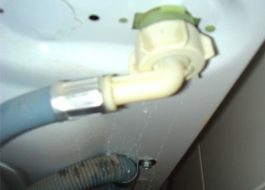
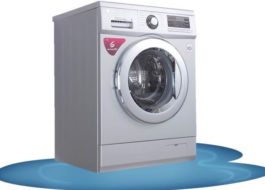
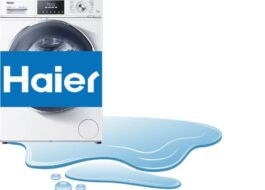

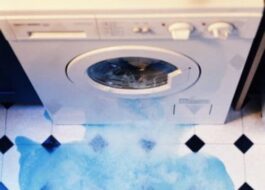










The explanation is simple, clear and intelligible. Thank you very much! I just ask you to use PPE. This is important both for yourself and for the audience.Safety preserves health and prolongs life.